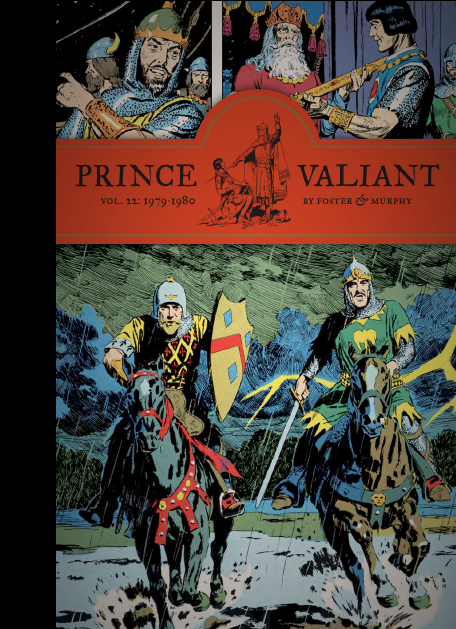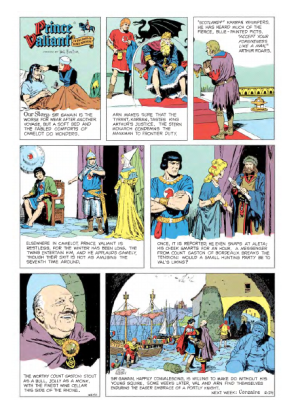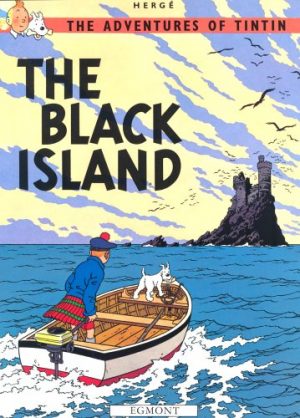Review by Frank Plowright
Strip number 2244 printed in February 1980 marks Hal Foster’s final contribution to the strip he created in 1937, written when he was 87. He would only live another two years, and sadly in considerable discomfort. Strangely, the landmark passes unremarked in the accompanying editorial pages, which instead are the recollections of John Cullen Murphy’s visit to Somerset, where most English portions of Prince Valiant are set, and a second essay by Todd H. Goldberg on historical authenticity.
Also notable is the closing twenty pages being reprinted for the first time in English. The final Fantagraphics paperback collection, Vol 50: Vikings on the Isle of Man, continued the strip past Foster’s last script, but didn’t run to the end of 1980 as this collection does. After Foster’s retirement the writing was supplied by Cullen Murphy, son of the artist.
1978’s final strip concerned Arn working behind the scenes to prevent the forced marriage of Grace to the despicable old Hrothgar, whose visual characterisation by Murphy is magnificent. He’s an aged specimen with wispy hair and barely any teeth, and dealt with via astute manipulation. That’s followed by Arn’s episodic and adventurous trip across France, before a return to Camelot and its idealism and pageantry. It’s decided that the young Galan is now of an age to become a page boy, an experience not previously detailed in the strip. His temper is problematical, but there’s no denying his bravery and resourcefulness over several mini-adventures where a Lord’s wife has cause to be grateful for taking him on.
Until the end of the collection Val’s appearances are minimal and brief, even when abducted and sold into slavery, as he shares the pages with Arn’s quest to rescue him. Foster’s intention was to progress the strip to the point where the famous Singing Sword was inherited by Arn. While he’s been drawn as a young adult for a while, in these pages he now has a moustache, making him look older.
Foster’s final writing concerns the Viking colonisation of the Isle of Man, an island lying between England, Ireland and Wales. The dangers of a hostile colony in that location prompt an investigation from Camelot, and when that’s settled Foster takes his leave having produced one of the greatest runs of comics the world has seen.
Murphy begins signing the art three weeks before Foster’s last strip, and the sample page, the second after Foster’s departure, shows a minor marking of territory via splitting a scene in the top tier over two panels. However, in the remainder of this collection Murphy impeccably maintains the formula beloved for years, and there would be little alteration moving forward, although while the layouts remain much the same, there’s eventually more of Murphy’s own style introduced.
The final stories here all take place in England. There’s treachery in Camelot when King Arthur falls ill, the death of a Duke in Cornwall arouses suspicions and Val adopts a wild boy. That story bridges 1980 and 1981, leaving this volume ending on a cliffhanger taking the series into Vol. 23. Without knowing of the behind the scenes changeover you can read these magnificently illustrated stories of stirring adventure and not realise any changes had occurred, and that’s the way Prince Valiant continues.





